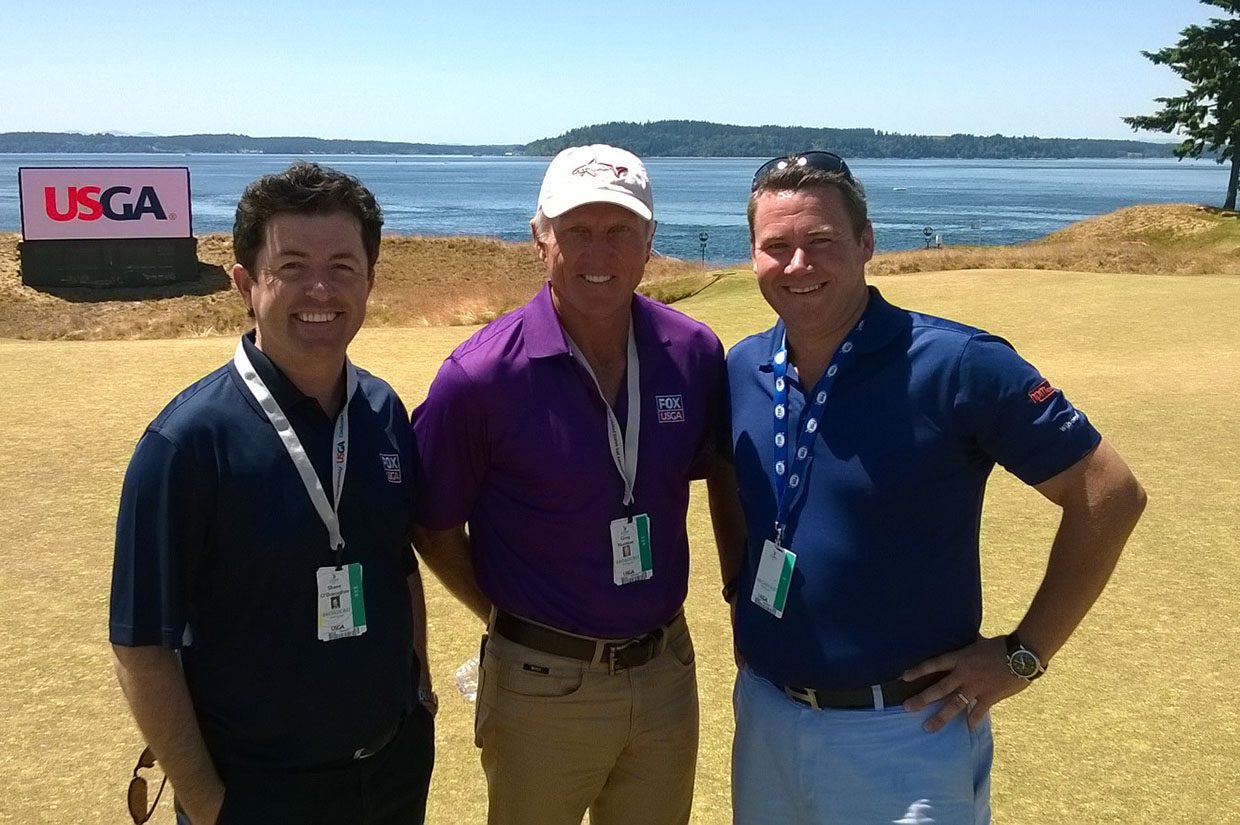Chambers Bay is not to everyone’s liking, but some are impressed
Dubliner John Clarkin will travel to Seattle next weekend to take in the build-up to the 115th US Open at Chambers Bay. It represents a momentous occasion for his company, Turfgrass Consultancy, which gains the distinction of having handled the agronomy for this, their first Major championship.
Among other things, the course will prompt familiar arguments about American notions of links terrain. In this particular case, however, they can make the genuine claim of staging the first US Open on fescue greens.
The dimensions are staggering, with the course covering 290 acres from an overall site area of 930. But is it the real deal? Despite understandable pride in the project, Clarkin made no attempt to mess with accepted criteria.
“Duneland it isn’t,” he said yesterday. “This was a gravel and sand pit, completely inert. But the sand would be very similar to the rabbit-sand that you find on an old, traditional links course. There are massive veins of this sand running through the site.”
He went on: “However, unlike Ballybunion and Lahinch which are entirely natural, Chambers Bay had to be created from a quarry which, of itself, was a big, flat piece of land. So there was a lot of sculpting and shaping of sand to create this course and I’m very proud of our contribution to it.”
Designed by Robert Trent Jones Jnr, it has already staged the US Amateur in 2010, when Byeong-Hun An, recent winner of the BMW/PGA Championship at Wentworth, was a beaten semi-finalist, while ultimate success went to American Peter Uihlein. In terms of grabbing attention, however, nothing has sparked the interest of leading tournament professionals more than the recent prediction by USGA executive director Mike Davis, who has responsibility for the course set-up.
Sane, imaginative work at Merion and Pinehurst No 2 stamped him as one of the more enlightened officials to have held his particular post. In the event, he has forecast that a player will not win this month’s staging without seeing the venue several times in advance.
Which has resulted in a steady stream of curious contestants, including a visit last week by Tiger Woods, three-time winner of the title, who declared it “very challenging”. A week previously, it was the turn of Phil Mickelson who has been runner-up on a record six occasions.
Further back, the extreme views of Ryan Palmer hit the headlines when he went there from the Cadillac Match Play in San Francisco. “Put a quarter in the machine and go for a ride,” the Texan declared with an appealing gambler’s line. “As far as the greens are concerned, it’s not a championship golf course.”
Ian Poulter then jumped on the bandwagon by claiming on Twitter that the course was “a farce”. A crucial difference in his case, however, was that he hadn’t been there: he was simply endorsing the whingeing of fellow professionals who are rather good at this sort of thing.
“I’ve noted those remarks and I think I understand why they were made,” said Clarkin. “The course was recently fertilised which would have greened it up somewhat. They tend to do that a few months before the tournament to create density in the grass before allowing it to dry out.
“Discounting Poulter, the players who have actually gone there will experience a very different challenge when the championship comes around. I think it’s a fantastic test, especially when you consider what it once was. The movement of the land alone and the wildlife areas, which have been created outside of the course, are remarkable.
“Only 70 acres in all have been turfed and the wide fairways tend to have tees blending into them without much delineation between the two. And there’s going to be a huge emphasis on putting. You have the big-hitters like Rory (McIlroy) who’ll be smashing it miles, but at the end of the day, it’s going to come down to the short game.”
He went on: “Our remit was to make sure that we got the right grasses in the right areas. What you’re going to see on television is a fescue golf course. And the scoring will hinge on how the USGA want it played; whether they water it or not. Either way, the undulating greens are likely to be extremely quick, though with fescue, you can’t cut them too tight, otherwise they tend to die. I think with the course set-up, they’ll be looking more at where to have the pins.”
Clarkin further reported that the site incorporates dramatic changes in elevation, ranging from 20 feet where it’s close to the Pacific to 200 feet further inland. And where the terrain moves, the greens tend to move with it. He suggested that flat greens on otherwise undulating terrain don’t tend to work. And generally speaking, putts will be breaking towards the ocean.
Predictably, the prestige of the Chambers Bay contract has done wonders for the image of the Irish company in the golf industry. In fact, since doing it, they have become involved in projects all over the world.
For instance, Clarkin and his director of agronomy, Julian Mooney, are handling their third Solheim Cup, following the success of their involvement at Halmstad in 2007 and Killeen Castle four years later. Their latest assignment is to prepare the St Leon-Rot course in Heidelberg for Europe’s September clash with the US, where El Tigre won the Players Championship of Europe in 1999, 2001 and 2002.
Turning his thoughts back to Chambers Bay, Clarkin said: “After 26 years in the industry, it’s obviously great to be finally involved in a Major. It’s also nice to have worked with Robert Trent Jones Jnr and to have put together all the specifications that were required for a site which wasn’t the easiest in the world to work on, with its shifting sands, veins of soil and springs popping up unexpectedly. And literally only one tree.”
I suggested that it must feel a little like completing a carpeting assignment in a rather plush mansion. “Indeed,” replied Clarkin. “Now I’m about to enjoy the hospitality of a nice house-warming.” In a climate he describes as similar to the West of Ireland on a warm day, this sounds like a splendid reward.
Dermot Gilleece: Sunday Independent Sport 07.06.2015

